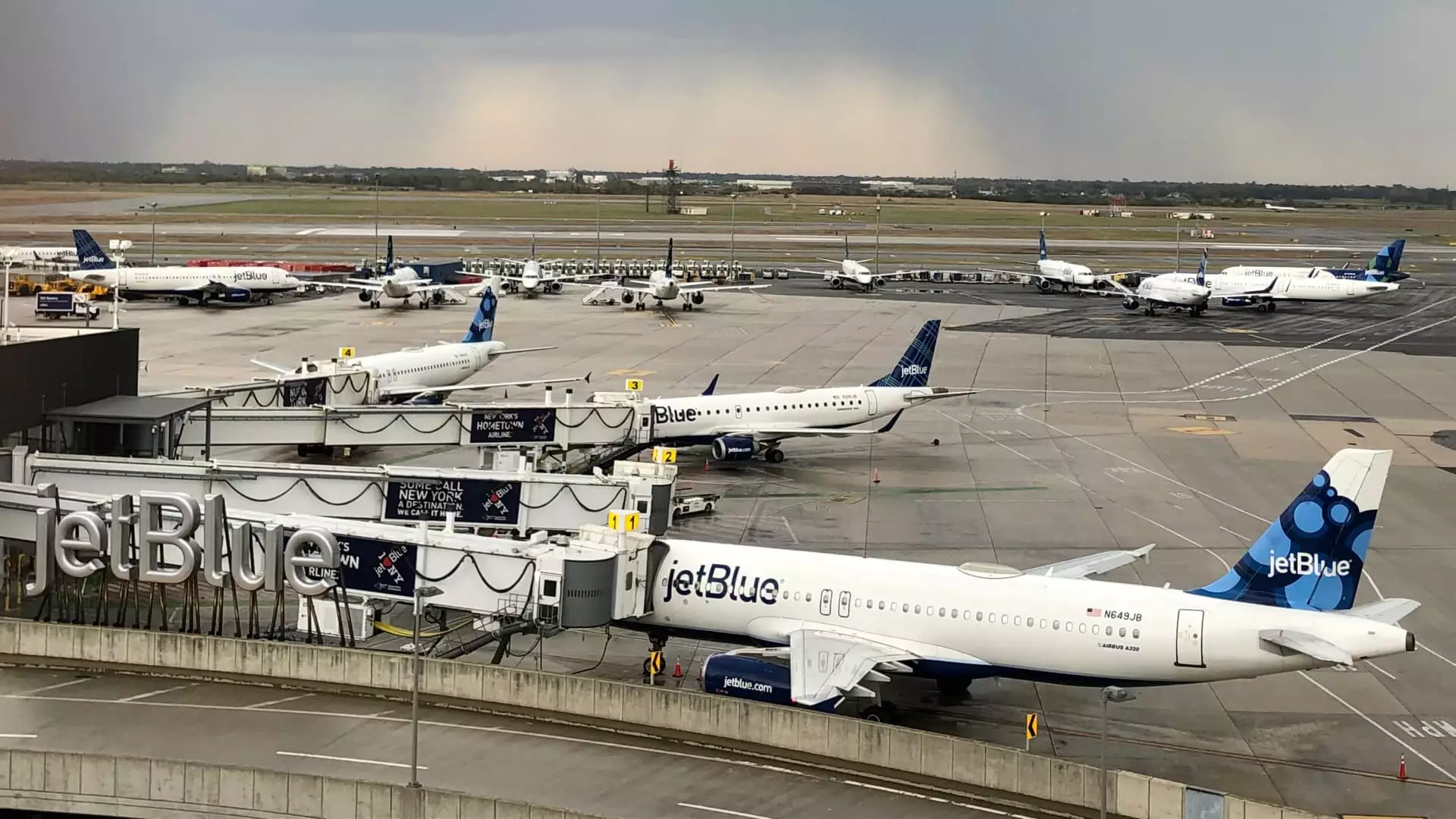In an unexpected yet strategic move, JetBlue Airways is set to launch its inaugural airport lounges, marking a significant transformation for this budget airline, which has primarily catered to cost-conscious travelers for over 20 years. This shift aligns JetBlue with major airlines like Delta, United, and American Airlines, which have successfully attracted high-spending clients through enhanced offerings. JetBlue’s lounges, slated to debut in New York’s John F. Kennedy International Airport and Boston Logan International Airport, signify its ambition to establish a premium identity and cater to affluent travelers.
The lounges will feature spacious designs, with New York’s facility spanning 8,000 square feet and Boston’s extending to 11,000 square feet. Both lounges are expected to provide an inviting atmosphere with amenities such as cocktail and espresso bars, light snacks, and dedicated workspaces. Notably, access will initially be limited to passengers in JetBlue’s Mint business class for trans-Atlantic flights, holders of the new premium credit card, and members with elite status within JetBlue’s loyalty program. This selective entry aims to maintain an exclusive atmosphere and prevent overcrowding—a common issue faced by many popular airport lounges.
JetBlue’s decision to prioritize its high-paying customers reflects its desire to foster a premium experience in the competitive air travel market. While it is apparent that many budget airlines are beginning to adopt strategies traditionally employed by their full-service counterparts, JetBlue’s effort stands out given its long-standing reputation for affordable travel.
JetBlue is operating under significant financial pressure, as it seeks to cut costs and regain profitability following a turbulent period marked by route slashes and deferred aircraft deliveries. The airline’s new venture into lounge offerings reveals an understanding of the changing dynamics within the aviation industry, where increasing revenues from ancillary services like premium credit cards and exclusive passenger experiences can significantly boost the bottom line. The upcoming partnership with Barclays for a premium credit card suggests that JetBlue is keen on capitalizing on lucrative financial strategies that its competitors have refined over the years.
The potential shift towards a more premium-based model brings both opportunities and challenges. While JetBlue risks alienating its traditional customer base by shifting focus to higher spenders, it also stands to gain considerable financial rewards if executed correctly.
JetBlue’s lounge initiative comes against a backdrop of heightened competition among airlines striving to enhance customer experiences. Airlines like Delta and American have taken proactive steps to revamp their lounge offerings, often limiting access to certain customer tiers. This trend, aimed at catering to wealthier clientele, raises questions about where budget airlines fit within this evolving landscape.
For many, the introduction of lounges by a low-cost airline may appear to dilute the original mission of providing affordable travel. Southwest Airlines, for example, is planning to introduce extra legroom seating instead of developing premium facilities akin to JetBlue’s lounges. This indicates that while Southwest is optimizing its service offerings, it is not directly pursuing a premium airline identity.
JetBlue Airways is diversifying its portfolio by entering the airport lounge market, reflecting broader trends within the airline industry towards premiumization. While this pivot may attract high-spending travelers, it is crucial for JetBlue to balance its innovative offerings with its established identity as a low-cost carrier. As the landscape continues to evolve, the long-term success of JetBlue’s lounges may hinge on their ability to integrate premium features without alienating the core customer base that has supported the airline since its inception. The choices JetBlue makes now can shape not just its future, but potentially the future of budget airlines at large.


Leave a Reply